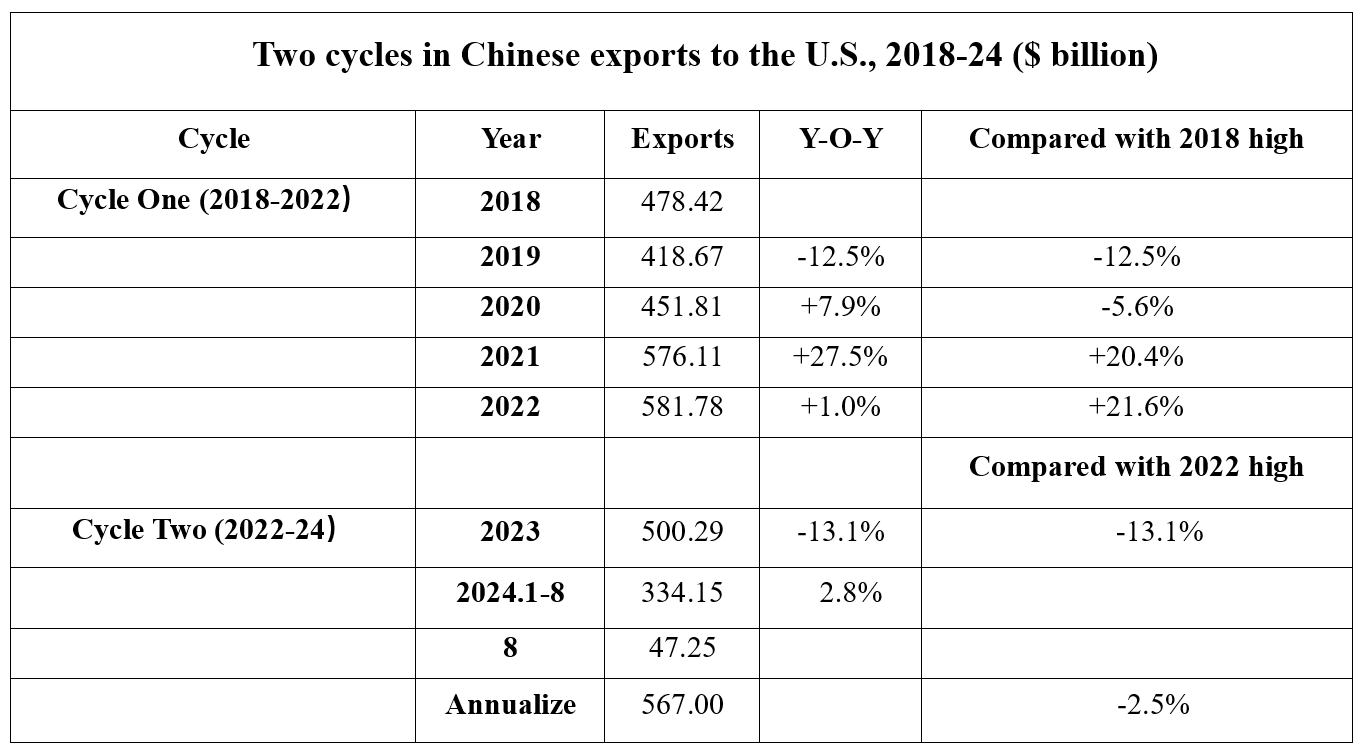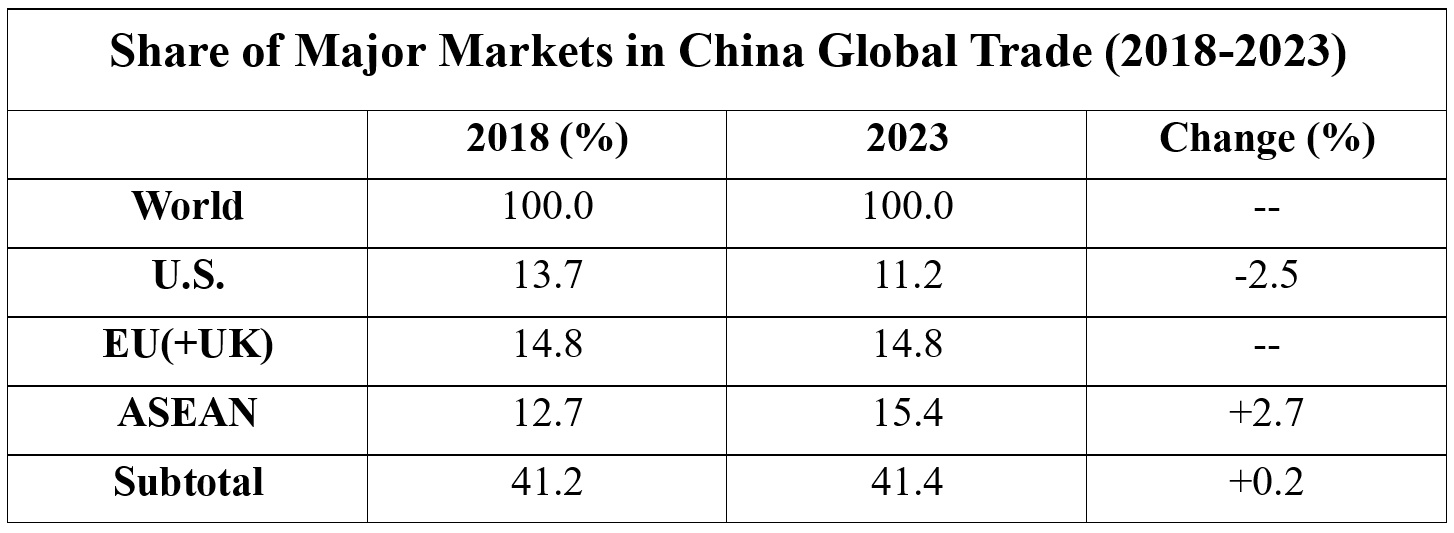Early in September, U.S. Senator Tom Cotton and his colleagues proposed the Trade with China Act, which contains a key clause that revokes permanent normal trade relations with China. It is the third time Cotton has proposed the bill over the past three and half years.
Revocation of PNTR, or Most Favored Nation status, means that 32 percent of tariffs will apply to all imports from China. Earlier, Donald Trump said that he will impose 60 percent of tariffs on all imports from China, namely 19.25 percent of the current tariff level after Trump’s unilateral 2018-19 tariffs, plus 32 percent of non-PNTR treatment and a further 10 percent general tariff on all imports from the rest of the world.
China’s PNTR status effective on Jan. 1, 2002 (after China accession to the World Trade Organization in November 2001), is not a unilateral grant by the United States but a binding international obligation under WTO rules — including China’s PNTR status in the U.S. and U.S. PNTR status in China. The core of WTO rules and the multilateral trade system is the unconditional multilateral MFN treatment, or non-discrimination for all WTO members alike, so as to create a fair, equal and level field for free trade flows among all WTO members. Both China and the U.S. are WTO members and bound to the WTO’s unconditional MFN clause. Since unconditional MFN status is a binding clause to which both must adhere, it is a normal and permanent trade relation. Hence, the PNTR.
No WTO member has the power to abrogate the WTO rule via domestic law. The revocation of PNTR is a blunt smash and total violation of the WTO rules and the core and foundation of the multilateral trade system.
China’s PNTR is not a one-way benefit to China only, but a two-way benefit to both China and United States. Chinese customs data show that during the 2000-23 period, Chinese exports to the U.S. increased from $ 52.1 billion to $ 500.2 billion (an aggregate increase of 860.2 percent), while its imports from the U.S. also increased from $ 2.23 billion to $ 147.4 billion (up 596.6 percent). Two-way trade growth was more or less balanced. Data from the U.S. show that, during the 2009-23 period, U.S exports worldwide increased by 91.1 percent while those to China increased by 112.6 percent.
PNTR has also benefited U.S. multinationals’ investment and operations in China. In 2023, China accounted for 63.8 percent of Qualcomm’s global revenue, 26.8 percent of Intel’s, one-third of GM’s global sales and 40 percent of Apple’s smartphone global sales.
On the other side, the revocation of China’s PNTR will be a grave damage to China, the U.S. and the world. It will result in 51-61 percent tariffs on all imports from China. And as an inevitable retaliation, all U.S. exports to China will also be subject to the same. That tariff level is undoubtedly a trade-killing one, as proved by postwar international trade history, and will undoubtedly inflict tremendous damage on Chinese and American businesses alike.
A Peterson Institute of International Economics report shows that the revocation of China’s PNTR status, followed by Chinese retaliation, will mean that China’s GDP will lose between 0.01 to 0.22 percentage points from 2025 to 2034, while the U.S. will shed $158.7 billion of GDP, durable goods output of $ 520 billion, inflation up 0.4 percentage points and a rise in unemployment, especially in agriculture, mining and durable manufacturing sectors. The report warned that all trade policymakers must read it carefully before making any policy moves.
The Oxford Institute of Economics estimated in an earlier study that a 60 percent tariff level on Chinese goods, followed by Chinese retaliation will result in a U.S. GDP loss of $1.9 trillion during the first year as well as a job loss of 801,000.
A Bloomberg report estimated that the revocation of China’s PNTR followed by retaliation will result in a 40 percent drop in U.S. imports. And if all U.S. trading partners retaliate, U.S. imports would fall by 55 percent. American exports would fall by 30 to 60 percent, and the extremely sad scenario of the Great Depression of the 1930’s — when the U.S. drastically raised tariffs across the board under the Smoot-Hawley Tariff Act. and the United Kingdom, France and Canada retaliated heavily — resulted in a 61 percent plunge in U.S. exports and a 66 percent drop in imports, prolonging the Depression.
The revocation of China’s PNTR and the additional 10 percent tariff on other imports from the world (as Donald Trump has promised), will mean a repetition of the Great Depression and a fatal retreat to pre-GATT time, along with a new economic depression in various parts of the world, including the United States.
Chinese economy and exports to the U.S. will undoubtedly suffer seriously in that eventuality. However, empirical studies have found something different, or the resilience in China’s exports to the U.S.

Source: China Customs. www.customs.gov.cn, and computations thereon.
The sweeping tariffs on Chinese goods during 2018-19 did lead to a fall in Chinese exports to the U.S. in 2019 (12.5 percent off). However, it started picking up in Q2, 2020, ending the year at $451.81 billion, a rebound of 7.9 percent. The rebound continued into 2021 and 2022, reaching a new high in 2022 at $581.78 billion — 21.6 percent higher than pre-tariff time in 2018. Hence, the tariff-driven plunge was short.
It only started falling sharply again in Q3, 2022 and hit a new low of $500.29 billion in 2023 — 13.1 percent off the 2022 high. The direct reason is not new tariffs, because there was no effective tariff rise in the Biden Administration. The cause was the high-tech bans and restrictions, or “small yard, high fence” policy. However, the new fall has been brief, and Chinese exports to the U.S. started to rebound again in Q3 2023. In August this year it reached $47.2 billion, annualized at $566.4 billion or 97.5 percent of the 2022 high.
What’s behind all this? Obviously, the close and complex intertwining of China-U.S. supply chains and the complementary nature of their trade has made it hard for the two economies to de-couple.

Source: Ibid.
The trade tensions over the past seven years have eroded the U.S. share of Chinese global two-way trade by 2.5 percentage points. During the same period, ASEAN’s share rose by 2.7 percentage points, easily filling the gap caused by the U.S. retreat, while the European Union (plus UK) kept its share astonishingly unchanged. The share of the three leading markets combined was stable.
Paradoxically, the United States has reduced direct imports from China but increased imports from ASEAN, especially Vietnam — but Vietnam also serves as a good destination for Chinese goods. During 2018-23, the United States increased its imports from Vietnam by $65.29 billion, and Vietnam increased its imports from China by $53.71 billion. Again, this shows supply chain synergy. During the first eight months of this year, G20 countries accounted for 64.2 percent of China’s global trade — virtually the same as 2018, or pre-U.S. tariff time.
All the above shows that the revocation of China’s PNTR in the U.S. might not hit China as severely as the analytical models show, because of the strong complementarity between China and the U.S. on the one hand, and on the other China’s key role in global supply chains, where there is extensive room for trade diversion to other markets.
PNTR should be further maintained, not revoked. The revocation of China’s PNTR not only runs against the WTO rules and against the basic economics of world trade but also against the common interests of both countries. China and the U.S. should continue to maintain dialogues, as well as practical trade and investment collaboration. They should improve bilateral trade relations steadily as a new contribution not only to our two peoples but also to the world multilateral trade system.
